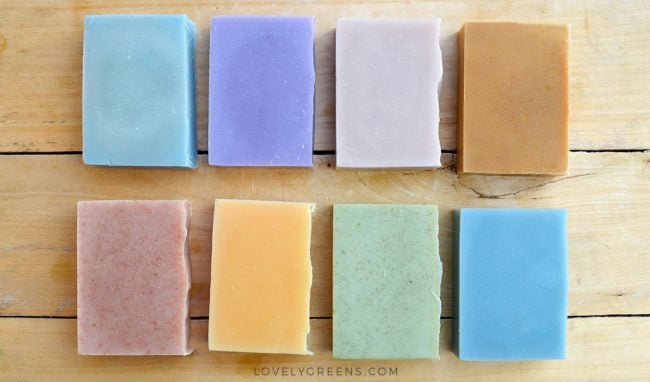Making your own soap is a good way to control the ingredients you expose your skin to. This is helpful if you have allergies or want to create all-natural products. When purchasing your soap making supplies, look for natural dyes that won’t irritate the skin. Here are a few ways to naturally color your soap:
Color Blocks or Powder Dyes
Color blocks and powdered dyes may be purchased with other soap making supplies at wholesale prices. They’re natural and can be used in different types of soaps. Color blocks come in vibrant colors like hot pinks, dark reds, and bright yellows. While you don’t want to use these colorants for layering soaps, they work well in melt-and-pour bases.
Powder dyes may be used for layered soaps since they aren’t prone to spreading or bleeding. They are all-natural and safe for many skin types. Powder dye tones are usually matte, and you can customize how bright or muted you want the soap to be using different measurements.
Natural Clays
If you want to make soaps with earthy tones like brown, red, gray, or green, there are different clays that provide nutrients to the skin while adding color to the final product. Kaolin clay is used to add a cream or white tint to homemade soaps. Rose clay is a good additive for individuals with sensitive skin, and it creates a red or pink hue. Bentonite clay may help balance the oils in your skin, and it provides a gray hue. Add decorative botanicals like flowers or seeds to your clay-colored soaps to improve their visual appeal.
Spices
Spices are good alternatives to synthetic soap colorants, as they result in bright colors and rich aromas. Turmeric has a bright yellow-orange tint and a fresh, spicy aroma. The nutrients in turmeric help lessen inflammation on the skin. Paprika gives your soap a deep red tone that may be used for holiday soaps or other specialty products. Cinnamon is another spice that works well for Christmas or Thanksgiving soaps, and it gives your soap a brown hue and warm fragrance.
Herbs and Plants
Some herbs and plants are good for adding strong scents and natural colors to your soaps. Breaking down your selected herbs and plants into powders helps them blend well with the liquid soap base. Some natural ingredients are left whole to add textures and exfoliating properties to the soap. Cocoa powder creates a chocolatey aroma and adds a rich brown color to your soap. Spirulina and green tea leaves give you green tints that have a refreshing scent and provide antioxidants and nutrients for your skin. You may control how green your soap will be by adjusting the amount of green tea powder you add. Mixing herbs and plants with other spices or clays can provide unique blends of textures and scents.
Flowers and Roots
Various flowers and roots add tints to your soaps and can also be used to create unique designs and textures. If you grind these ingredients down into fine powders, the soap will have a smooth finish. If you want to produce an exfoliating soap, find floral ingredients that have been dried and chopped up. Chamomile, roses, and lavender are a few examples of flowers you can use in your soaps. These flowers also provide aromatherapy benefits. Roots like beetroots result in a deep red or purple hue, while carrots have an orange tint that infuses vitamin C into your products.
Mica and Other Minerals
Mica and other minerals provide additional options for natural soap colorants. When you’re working with these powders, be careful not to inhale them or add too much to the soap, as they may cause minor irritation. Adding too much mineral powder could also cause your soap to clump. If used correctly, mica and other minerals will be suspended in the soap to produce a long-lasting color and shimmering effect. Shimmery colors created by mineral additives include pearl, silver, and gold.
Purchase Colorants and Other Soap Making Supplies
Making soaps using natural colors and dyes allows you to confirm the ingredients are safe and healthy. Choose powders or dyes made from herbs, roots, clays, or charcoal, depending on the color and brilliance you want for your soap. Adding spices can also provide a strong scent that works well for holidays and specialty molds. Contact your soap supply wholesaler today to learn more about their collection of natural colorants.






